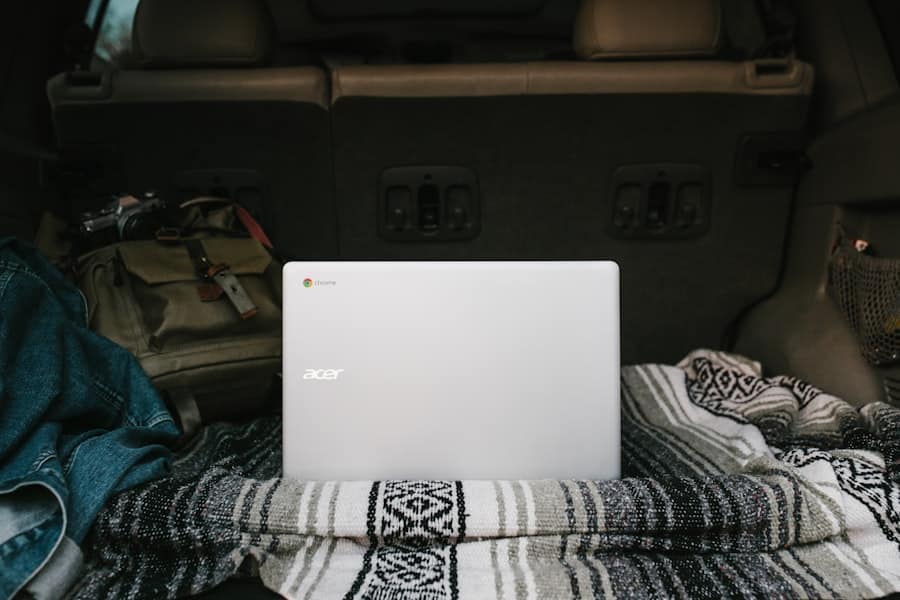In recent years, Chromebooks have emerged as a popular choice among students and educational institutions alike. These lightweight laptops, powered by Google’s Chrome OS, are designed to provide a seamless online experience, making them particularly well-suited for the demands of modern education. With their affordability, ease of use, and robust integration with Google Workspace, Chromebooks have become essential tools for students navigating a digital learning environment.
The rise of remote learning and the increasing reliance on cloud-based applications have further solidified their place in classrooms and homes. The appeal of Chromebooks lies not only in their cost-effectiveness but also in their simplicity. They boot up quickly, offer a user-friendly interface, and are generally less prone to viruses compared to traditional operating systems.
This makes them an ideal choice for students who may not have extensive technical knowledge. Additionally, the vast array of applications available through the Google Play Store allows students to access a wide range of educational tools, from productivity software to creative applications, enhancing their learning experience.
Key Takeaways
- Chromebooks are a popular choice for students due to their affordability, portability, and ease of use.
- When choosing a Chromebook for students, look for features such as durability, long battery life, and high-resolution displays.
- Budget-friendly Chromebooks for students include models from Acer, ASUS, and Lenovo, offering good performance at a lower cost.
- For multitasking and productivity, consider Chromebooks with at least 4GB of RAM and Intel Core processors for smooth performance.
- Chromebooks with long battery life, such as the Google Pixelbook and Samsung Chromebook, are ideal for all-day use at school or on the go.
Key Features to Look for in a Student Chromebook
When selecting a Chromebook for students, several key features should be considered to ensure that the device meets educational needs effectively. First and foremost is performance. A Chromebook should be equipped with a capable processor, such as Intel’s Celeron or Pentium series, or even better, an Intel Core i3 or i5 for more demanding tasks.
This ensures that the device can handle multiple applications running simultaneously without lag, which is crucial for students who often multitask between research, writing, and online collaboration. Another important feature is storage capacity. While many Chromebooks rely on cloud storage solutions like Google Drive, having sufficient local storage is still beneficial for offline access to files and applications.
A minimum of 32GB of eMMC storage is recommended, although models with 64GB or more provide added flexibility. Additionally, RAM plays a significant role in performance; 4GB is typically sufficient for basic tasks, but opting for 8GB can enhance multitasking capabilities and future-proof the device as software demands increase.
Top Budget-Friendly Chromebooks for Students
For students on a tight budget, there are several excellent Chromebook options that deliver solid performance without breaking the bank. One standout model is the Acer Chromebook 14, which offers a sleek design and a 14-inch full HD display. Priced affordably, it features an Intel Celeron processor and 4GB of RAM, making it suitable for everyday tasks like browsing the web, streaming videos, and using Google Docs.
Its aluminum chassis adds durability while maintaining a lightweight profile, making it easy to carry around campus. Another budget-friendly option is the Lenovo Chromebook Duet. This 2-in-1 device combines the functionality of a laptop and a tablet, featuring a detachable keyboard that allows for versatile use.
With a MediaTek Helio P60T processor and 4GB of RAM, it handles basic tasks efficiently while its 10.
The Duet’s compact size and long battery life make it an excellent choice for students who need a portable device for note-taking and studying on the go.
Best Chromebooks for Multitasking and Productivity
For students who require a Chromebook that can handle multitasking and productivity-intensive applications, several models stand out in the market. The Google Pixelbook Go is one such device that excels in performance and design. With options for Intel Core m3, i5, or i7 processors and up to 16GB of RAM, this Chromebook can effortlessly manage multiple tabs and applications simultaneously.
Its 13.3-inch full HD display offers vibrant colors and sharp visuals, making it ideal for both work and entertainment. Another excellent choice is the ASUS Chromebook Flip C434. This versatile 2-in-1 device features a 14-inch touchscreen display that can rotate 360 degrees, allowing it to function as both a laptop and a tablet.
Powered by Intel’s Core m3 or i5 processors and equipped with up to 8GB of RAM, it provides ample power for multitasking. The Flip C434’s sleek design and premium build quality make it not only functional but also aesthetically pleasing, appealing to students who value style alongside performance.
Chromebooks with Long Battery Life for All-Day Use
Battery life is a critical consideration for students who need their devices to last throughout the school day without frequent recharging. The HP Chromebook x360 14c is an exemplary model in this regard, boasting an impressive battery life of up to 12 hours on a single charge. This convertible Chromebook features a 14-inch full HD touchscreen display and is powered by Intel’s Core i3 or i5 processors, ensuring that it can handle various tasks while maintaining efficiency.
Another noteworthy option is the Samsung Galaxy Chromebook 2. While it offers a slightly shorter battery life of around 10 hours, it compensates with its vibrant QLED display that enhances multimedia experiences. The Galaxy Chromebook 2 is equipped with an Intel Celeron processor and up to 8GB of RAM, making it suitable for everyday tasks while providing enough power for light multitasking.
Its lightweight design and portability make it an excellent companion for students who are always on the move.
Top Chromebooks for Students with Durability and Portability
Durability is paramount for student devices that are often subjected to daily wear and tear. The Dell Chromebook 3100 is designed specifically with this in mind; it features a rugged design that meets military-grade durability standards (MIL-STD-810G). This Chromebook can withstand drops from up to four feet and has reinforced corners to protect against accidental bumps.
With an Intel Celeron processor and up to 8GB of RAM, it provides reliable performance while ensuring that it can endure the rigors of student life. Another durable option is the Lenovo 100e Chromebook Gen 3. This device is built with spill-resistant keyboards and rubber bumpers to protect against accidental spills and drops.
It features an Intel Celeron processor paired with 4GB of RAM, making it suitable for basic educational tasks. The lightweight design enhances portability, allowing students to easily carry it between classes or study sessions without feeling weighed down.
Chromebooks with High-Resolution Displays for Multimedia and Creativity
For students involved in creative pursuits or those who enjoy consuming multimedia content, having a high-resolution display can significantly enhance their experience. The ASUS Chromebook Flip C436 is an excellent choice in this category; it features a stunning 14-inch full HD touchscreen display with vibrant colors and sharp details. This model not only supports multitasking but also provides an immersive viewing experience for watching videos or editing photos.
The Google Pixelbook Go also deserves mention for its impressive display quality. With options for a 4K display, this Chromebook caters to students who require high-resolution visuals for graphic design or video editing projects. The Pixelbook Go’s sleek design complements its performance capabilities, making it an attractive option for creative students who value both aesthetics and functionality.
Conclusion and Final Recommendations
In summary, Chromebooks have become indispensable tools for students due to their affordability, ease of use, and robust performance capabilities tailored to educational needs. When selecting a Chromebook, it’s essential to consider key features such as processing power, storage capacity, battery life, durability, and display quality based on individual requirements. Budget-friendly options like the Acer Chromebook 14 and Lenovo Chromebook Duet cater to those looking for economical choices without sacrificing performance.
For students who require enhanced multitasking capabilities, models like the Google Pixelbook Go and ASUS Chromebook Flip C434 stand out as top contenders. Additionally, those prioritizing battery life will find reliable options in the HP Chromebook x360 14c and Samsung Galaxy Chromebook 2. Durability-focused students can opt for rugged devices like the Dell Chromebook 3100 or Lenovo 100e Chromebook Gen 3.
Ultimately, the right Chromebook will depend on each student’s unique needs—whether they are focused on productivity, creativity, or simply seeking a reliable device for everyday tasks. With numerous options available across various price points and specifications, students can find the perfect Chromebook to support their academic journey effectively.
If you’re interested in exploring more tech options for students, you may want to check out this article on the best laptops for kids in 2023. It provides a comprehensive guide on choosing the right device for your child’s educational needs.
FAQs
What are the top Chromebooks for students in 2025?
Some of the top Chromebooks for students in 2025 include the ASUS Chromebook Flip C434, Google Pixelbook Go, and Lenovo Chromebook Duet.
What features should students look for in a Chromebook?
Students should look for Chromebooks with long battery life, lightweight and portable design, a good keyboard for typing essays and assignments, and a high-resolution display for reading and studying.
Are Chromebooks good for students?
Yes, Chromebooks are good for students because they are affordable, have a simple and easy-to-use interface, and offer access to a wide range of educational apps and tools.
Can students run Microsoft Office on Chromebooks?
Yes, students can run Microsoft Office on Chromebooks through the Microsoft Office Online web apps or by using the Android app versions available in the Google Play Store.
What is the average price range for Chromebooks for students?
The average price range for Chromebooks for students is between $200 to $500, with some premium models reaching up to $800.



